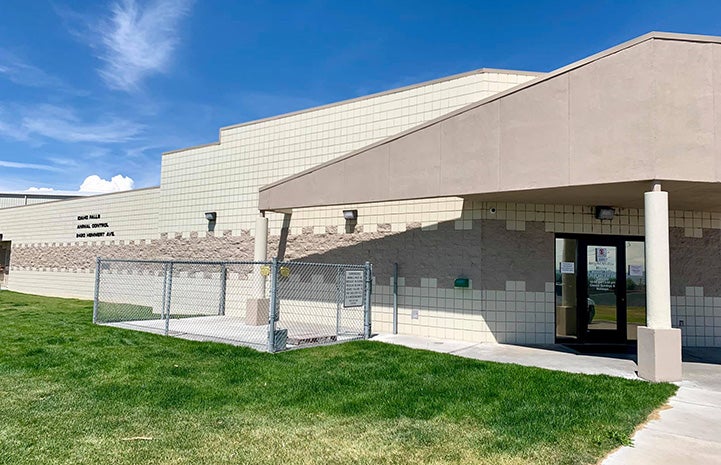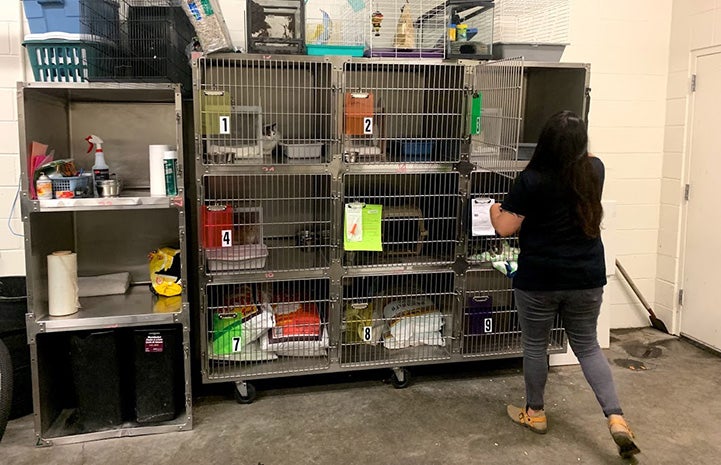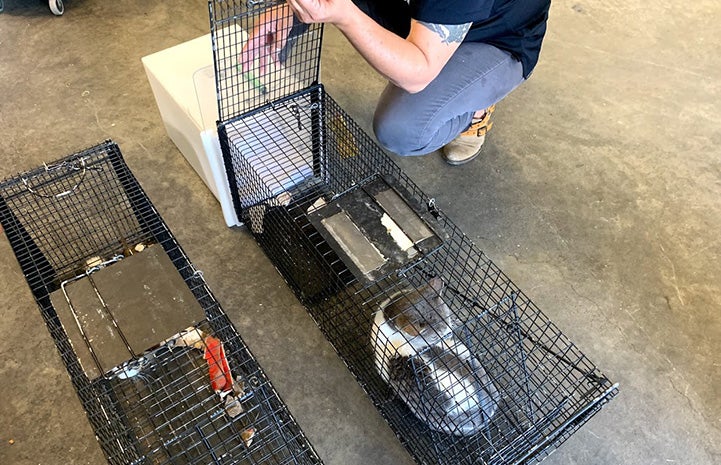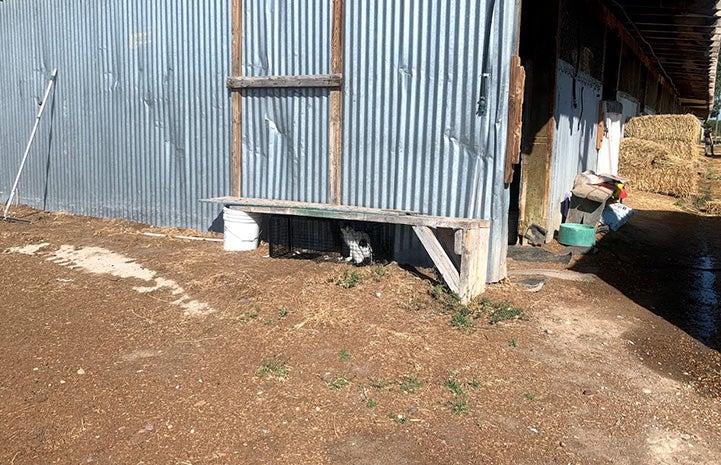Idaho Falls Animal Shelter was saving less than half of the animals in its care, but today its save rate is at 97%

In July of 2016, two Idaho animal control officers (ACOs) attended the Best Friends National Conference in Salt Lake City. Danyelle Harker and Gayle Contreras didn’t know what to expect, and the truth was they weren’t expecting much. They were about to be surprised and inspired.
“Here we were,” says Danyelle, “two burned-out ACOs from Idaho going to this massive conference to learn how to ‘Save Them All.’ To say the least, we were a bit pessimistic walking in. We had the mentality of: ‘They don’t know what we are dealing with in our shelter. Our shelter/community is different.’ Little did we know just what this conference would change for us.”
At the time, Idaho Falls Animal Shelter had just become a Best Friends Network partner. In prior years, the shelter had already made amazing progress in saving dogs. In just five years (2011-2016), Danyelle says they went from saving only half the dogs entering the shelter to saving more than 98% of them. It was a remarkable turnaround achieved by establishing rescue group contacts, recruiting volunteers and being more transparent with the public about what was happening at the shelter.
Although that approach kick-started lifesaving for dogs, it was still a different (and bleak) story for cats. That needed to change, but the shelter needed help.
Shelter needs help to save cats
Because of overcrowding, more than half (56%) of the 2,099 cats entering the shelter in 2016 did not make it out alive. It wasn’t just the extremely sick or injured animals that were euthanized at the shelter. It was also community cats (aka outdoor, stray or feral cats), as well as friendly, social cats and litters of kittens with treatable illnesses such as upper respiratory infections.
The grim situation was taking a terrible toll, not only on the animals, but also on Danyelle, Gayle and all the shelter staff. People felt burned out and hopeless. Some were so traumatized by their daily job tasks that they sought counseling. But big changes were on the horizon.

Making a commitment to no-kill
Following the conference, Danyelle and Gayle, feeling refreshed and inspired, returned to make some huge changes at their shelter. “We announced on our first day back from the conference that we were committed to transitioning the Idaho Falls Animal Shelter to a no-kill shelter,” Danyelle says. Their enthusiasm was met with skepticism. “The looks we got were comical,” she recalls. “Employees snickered and doubted our abilities. They thought there was no way we’d be able to tackle such a massive task.”
Overcoming skepticism wasn’t the only hurdle for the Idaho Falls facility. Danyelle and her team spent the next year and a half planning, preparing and laying the groundwork for the massive changes they were determined to make. But before they could even begin to implement any of them, they needed city approval. That’s because the shelter has a municipal contract, which means that any operational changes, such as starting a trap-neuter-return (TNR) program for cats, must be approved by the city council.
More about TNR programs for cats

Why TNR?
TNR entails trapping, spaying or neutering, vaccinating and returning community cats to their original outdoor locations. It is not only the most humane method of preventing cats from entering the shelter system, but it’s also the most effective. TNR had never been done in that area of Idaho before — not even in Boise. It took some convincing, but the city council approved the proposal.
In 2017, the Idaho Falls Animal Shelter, with grant funding from Best Friends, built a TNR program from the ground up. The grant also provided incentives for rescue organizations to pull cats from shelters to find them new homes. “With this grant we were able to double the save rate for cats from 2015 to 2017,” Danyelle says.
The good news kept coming. In 2018, Idaho Falls was chosen for the Best Friends community cat program (CCP) mentorship. In addition to financial help, Idaho Falls would have an experienced mentor from Best Friends — someone who could give good advice about safely and effectively trapping community cats and reducing stress on the cats by utilizing feral cat dens during the TNR process.

Help from a community cat program mentorship
Under the mentorship program’s guidance, the shelter also started incorporating shelter-neuter-return (SNR) in 2018. With SNR, healthy stray cats entering the shelter (without owner identification) are spayed or neutered, vaccinated and given a general health check before being returned to their neighborhood homes. The shelter also hired a part-time CCP coordinator to run the program and take some of the load off officers in the field.
Idaho Falls also made another huge change during the mentorship by closing its outdoor drop boxes — structures outside the shelter where people could leave stray animals.
The reasons for closing drop boxes are many, according to Desiree Triste-Aragon, community cat program manager:
The Association of Shelter Veterinarians’ guidelines for standards of care in animal shelters call for alternative drop-off arrangements and information to be provided to the public, since unattended drop boxes can be a safety hazard for live animals.
When an animal is dropped off without identification, mandatory stray holds are put on that animal, even if the animal was someone’s pet (and not a stray). Unnecessary stray holds use up additional shelter resources and can increase the length of an animal’s shelter stay.
Finally, if someone drops off an animal without any sort of discussion, it’s a missed opportunity to get additional information about the animal or find out if resource help could prevent the animal from being surrendered in the first place.
Once the Idaho Falls shelter closed its drop boxes, the number of animals entering the shelter dropped. That caused some people to worry that pets would be abandoned elsewhere in the community instead of leaving them outside the shelter. But Danyelle says, “We have not seen an increase in stray or abandoned animals whatsoever. Closing the drop boxes has been a great change.”
The mentorship program, along with another grant from Best Friends in 2019, has helped Idaho Falls dramatically increase its lifesaving for cats. The benchmark for no-kill is a 90% save rate. So far this year, Danyelle says, Idaho Falls has saved 96% of cats and more than 98% of dogs for a remarkable overall save rate of 97%.
Let’s get the country to no-kill by 2025
Recognizing hard work on behalf of cats
Danyelle, who has been working for Idaho Falls for nine years, says she finds it difficult to describe the massive changes in Idaho Falls. “Staff morale has improved dramatically,” she says, adding that the shelter’s increased ability to save and improve the lives of animals is nothing short of spectacular.
Besides the shelter’s hard work and help from Best Friends, Danyelle credits the public for bringing about the change. “We have massive community support, and it has been truly inspiring,” she says.
The Idaho Falls Animal Shelter can now treat cats for minor illnesses like upper respiratory infections. But even more amazing is that the shelter is also saving the lives of cats with very serious illnesses and cats with injuries that require critical veterinary care, such as removing an eye or amputating a limb.
“I’m so proud of everything we’ve been able to accomplish with the help of Best Friends and the support of the community,” Danyelle says.
This year, Idaho Falls’ hard work on behalf of cats earned the organization an award at the same event that was the inspiration for its sweeping changes. At this summer’s 2019 Best Friends National Conference, the shelter won a Network Partner Award, which recognizes organizations for making progress toward their missions and toward no-kill 2025.

Conquering challenges to save cats
Still, there’s much work to be done and distinct challenges lie ahead. One big one is maintaining save rates at or above the 90%, the no-kill benchmark. That means continuing to garner support, funding and momentum for the lifesaving programs that brought organizations to no-kill in the first place. But the Idaho Falls Animal Shelter has already demonstrated that it knows how to conquer challenges — even those that seem insurmountable.
“People doubted us. They called us crazy, but we did it,” says Danyelle of the push toward no-kill. “We know what we are capable of, and we cannot wait to continue fighting for our feline friends.”
More about Best Friends Community Cat Programs

Photos courtesy of Jennifer Adkins and Danyelle Harker